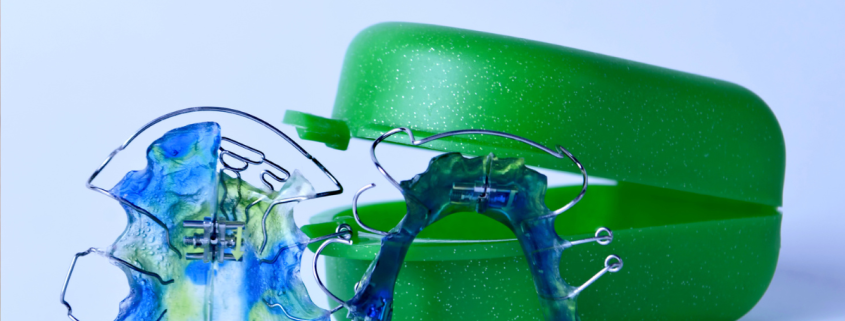How To Disinfect a Retainer – (FULL GUIDE)
Ever wondered how to properly care for your dental retainer? Put your worries aside! Maintaining oral health goes beyond just brushing and flossing, especially for those who wear dental retainers.
Maintaining a clean and disinfected retainer is of utmost importance for the overall oral health and well-being of individuals. Retainers are commonly used in orthodontics to maintain the alignment and position of teeth after braces or other orthodontic treatments. While retainers play a crucial role in preserving the achieved results, they can also become breeding grounds for bacteria and other harmful microorganisms if not properly cleaned and disinfected.
Read on, and you might find the answers to questions you didn’t even know you had!
Contents
How Often Should a Retainer Be Disinfected?
Generally, it is recommended to disinfect your retainer once a day. However, this frequency may vary based on factors such as type of retainer, the amount of time it is worn, and individual oral health circumstances. It is advisable to consult your orthodontist for a personalized recommendation.
Steps to Disinfect a Retainer
Disinfecting a retainer is a simple process that requires only a few steps. Follow these instructions carefully to ensure the safety and effectiveness of the disinfection process:
- Remove: Start by removing your retainer from your mouth. Always handle it with clean hands.
- Rinse: Rinse the retainer under lukewarm water. Avoid using hot water as it may distort the shape of the retainer.
- Clean: Use a soft-bristle toothbrush to gently brush the retainer. Avoid using toothpaste as it can be abrasive and damage the retainer.
- Disinfect: Soak the retainer in a dental disinfectant solution for the recommended amount of time. Be sure to follow the instructions on the product packaging.
- Rinse Again: Once the retainer has been soaked, rinse it again under lukewarm water.
- Dry: Allow the retainer to air dry completely before placing it back in your mouth or its case.
Remember, it’s important to regularly check your retainer for any signs of damage. If you notice any cracks, discoloration, or other signs of wear, get in touch with your orthodontist promptly.
Choosing a Disinfectant
There is a range of disinfectants available for cleaning retainers. These include commercial dental disinfectant solutions, hydrogen peroxide, and distilled white vinegar. When choosing a disinfectant, it’s important to consider the material of your retainer and its manufacturer’s instructions. Certain materials may react negatively to specific disinfectants. If you’re unsure, consult your orthodontist.
What Are The Potential Risks Or Side Effects Of Disinfecting a Retainer?
Disinfecting a retainer is a crucial part of overall oral hygiene. While the process is generally safe, it’s important to be aware of the potential risks and side effects. Missteps in retainer cleaning can lead to damage to the appliance, discomfort, or health issues.
Potential Risks
- Damage to the Retainer: Some cleaning methods can damage the material of the retainer. Harsh chemicals, hot water, and abrasive cleaning tools can warp, crack, or wear down the retainer over time.
- Residual Chemicals: If not properly rinsed, cleaning solutions can leave behind residue that may irritate your gums and mouth or alter the taste of food and drink.
- Allergic Reactions: Some people may be allergic to certain cleaning solutions. An allergic reaction could result in swelling, redness, or discomfort in the mouth.
Possible Side Effects
- Discomfort: A damaged or improperly cleaned retainer can cause discomfort or pain. It may rub against the gums, causing sores or irritation.
- Oral Health Issues: If a retainer is not properly disinfected, it can harbor bacteria, leading to infections, bad breath, or other oral health problems.
Given these potential risks and side effects, it’s important to follow appropriate retainer disinfection procedures. Always use products and methods recommended by your dental professional to ensure the longevity and efficacy of your retainer. Remember, your retainer is an investment in your oral health, and proper care is key to keeping your smile looking its best.
Are There Any Natural Or DIY Methods For Disinfecting a Retainer?
Indeed, there are several natural and do-it-yourself (DIY) methods that can effectively disinfect your retainer. While these methods can be convenient and affordable, it’s important to remember that they should supplement, not replace, regular professional cleanings. Here are some of the most common DIY methods:
Vinegar and Water Solution
One of the most popular natural methods involves using a mixture of vinegar and water. Vinegar is a mild acid that can help kill bacteria and remove stains. To use this method:
- Combine equal parts of white distilled vinegar and warm—not hot—water.
- Soak your retainer in the solution for at least 15-20 minutes.
- Rinse thoroughly under running water before placing it back in your mouth.
Baking Soda Bath
Baking soda is another natural cleanser that can be used to disinfect retainers. It’s a mild abrasive that can help remove plaque and also neutralize odors. Here is how to use it:
- Combine two teaspoons of baking soda with a cup of water.
- Soak your retainer in the solution for a few hours or overnight.
- Rinse it well under cold water before wearing it again.
Hydrogen Peroxide
Hydrogen peroxide is an excellent disinfectant that is often used to clean wounds. It can also be used to clean retainers. However, it should be used sparingly because frequent use could potentially bleach your retainer. Here is the recommended method:
- Mix equal parts of 3% hydrogen peroxide and warm water.
- Soak your retainer for about 30 minutes.
- Rinse thoroughly under running water before putting it back in your mouth.
Remember, while these DIY methods can help keep your retainer clean, it is essential to also regularly bring your retainer to your orthodontist for professional cleaning. They have specialized tools and solutions that can provide a deep, thorough clean that home solutions might not achieve.
Conclusion
Preserving the health and aesthetic appeal of your smile hinges significantly on proper retainer care. Neglecting this crucial task could turn your retainer into a breeding ground for harmful bacteria.
Maintaining a clean retainer isn’t merely a suggestion, it’s a necessity. A hygienic retainer not only enhances the effectiveness of your orthodontic treatment but also safeguards against infections and other dental health complications. Overlooking this responsibility may result in discomfort, foul breath, and could potentially compromise your orthodontic treatment.
Stay alert and knowledgeable. Your retainer plays an equally important role in your oral health as your teeth and warrants your utmost attention. Here’s to a future filled with radiant smiles and outstanding oral health!
Need Help with Your Retainer Care? If you have any concerns or need professional guidance on proper retainer care, don’t hesitate to reach out to Dr. Rangiani at Dr. Braces, located in Alexandria, CA. A specialized orthodontist, Dr. Rangiani is dedicated to ensuring your retainer is in top shape, contributing to your beautiful smile.





Leave a Reply
Want to join the discussion?Feel free to contribute!